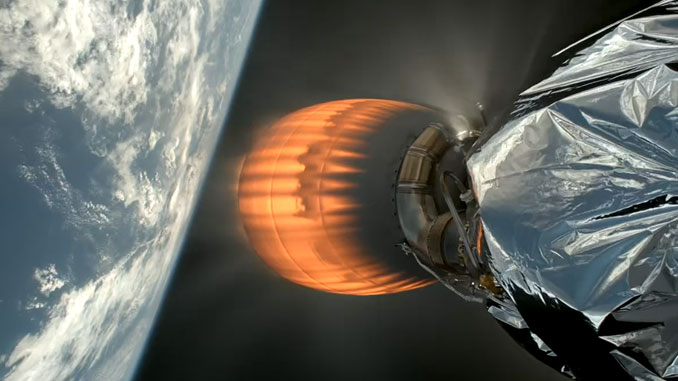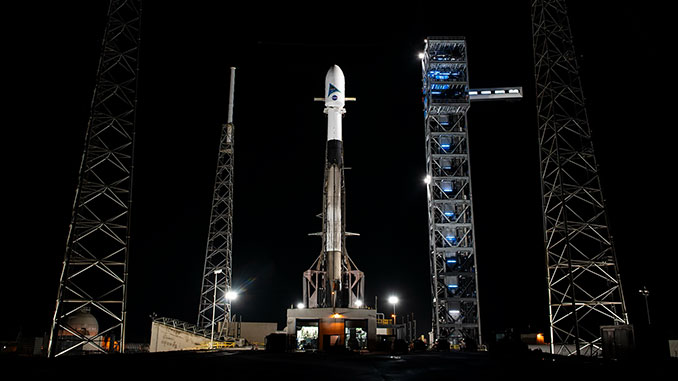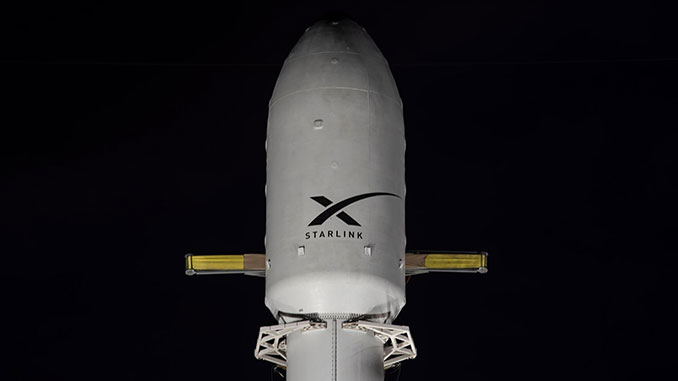
SpaceX’s Falcon rocket fleet was grounded for the third time in three months after a second stage problem occurred Saturday following the successful launch of a Dragon Capsule carrying two crew to the International Space Station. The suspension in flights comes as the company prepares to launch two solar system exploration missions in October with narrow launch windows.
SpaceX said the Falcon 9 second stage that launched NASA’s Crew 9 mission failed to correctly perform a firing of its Merlin Vacuum engine less than 30 minutes after releasing Dragon Freedom into a planned 117×128 mile (189×206 km) orbit.
The engine firing is designed to prevent the rocket body from becoming space debris by driving the stage into the atmosphere for a destructive reentry. Any debris was supposed to fall harmlessly into the ocean in an area previously identified in warnings to mariners and aviators.
“Falcon 9’s second stage was disposed in the ocean as planned, but experienced an off-nominal deorbit burn,” SpaceX said in a social media post, shortly after midnight EDT on Sunday. “As a result, the second stage safely landed in the ocean, but outside of the targeted area.”

The mishap is likely to prompt an investigation from the Federal Aviation Administration (FAA) which oversees the company’s launch licenses. SpaceX is currently in dispute with the FAA over fines related to Falcon 9 activities at Kennedy Space Center and delays gaining authorization for the fifth test flight of its Starship vehicle from Starbase in Texas.
Spaceflight Now reached out to the FAA for comment but had not yet received a response, with the FAA’s offices closed for the weekend.
Debris from the rocket stage should have fallen in a stretch of the Pacific Ocean that started east of New Zealand, but probably ended up falling further downrange, but still south of the Equator, according to Jonathan McDowell, an astrophysicist and tracker of space launches and satellites.
“The most likely failure mode that still results in reentry is a slight underburn,” he said in a post on X, formerly known as Twitter. “So you expect the entry to be further along… but not by too much.”
McDowell told Spaceflight Now he estimates the deorbit burn should have occurred around 1:55 p.m. EDT (1755 UTC) as the craft passed over Yemen. If everything had gone to plan, reentry would have happened about 35 minutes later.
Here is the ground track showing the planned reentry area at bottom left. My analysis suggests that an off nominal deorbit that still ends up with stage reentry will impact on the orange line somewhere between the end of the white rectangle and the equator pic.twitter.com/NgG2ZL3SIe
— Jonathan McDowell (@planet4589) September 29, 2024
SpaceX was scheduled to launch 20 satellites for OneWeb from its West Coast launch pad at Vandenberg Space Force Base late Sunday night local time but that mission was put on hold, along with a Starlink delivery mission from Cape Canaveral originally planned for Wednesday.
“We will resume launching after we better understand root cause [of the problem],” SpaceX said in its statement.
This will be the third grounding of the Falcon 9 fleet in three months. An upper stage problem resulted in the loss of 20 Starlink satellites on July 11. Flights resumed 15 days later after the company determined the cause of a liquid oxygen leak and came up with a quick fix. A shorter suspension of just three days came when a Falcon 9 first stage made a crash landing on the deck of SpaceX’s drone ship after an otherwise successful launch on August 28. The company has not disclosed the cause of that mishap.
The grounding of the Falcon fleet will be of particular concern to NASA and the European Space Agency (ESA) which had launches of solar system exploration missions planned within days of each other in early October.
On October 7 a Falcon 9 is scheduled to launch from Cape Canaveral with ESA’s Hera mission to study the Didymos binary asteroid system that was impacted by the DART mission in September 2022. It’s launch window runs until October 27.
Then on October 10, a Falcon Heavy, which uses the same second stage as the Falcon 9, is due to launch NASA’s Europa Clipper on a mission to explore one of Jupiter’s most intriguing moons. The Falcon Heavy will need all its performance for the $5 billion mission and two burns of the rocket’s second stage will be required.
The spacecraft will be released from the rocket at a velocity of approximately 25,000 mph (40,200 km per hour), the fastest speed ever achieved by a Falcon upper stage. The launch window for Europa Clipper closes on October 30.



